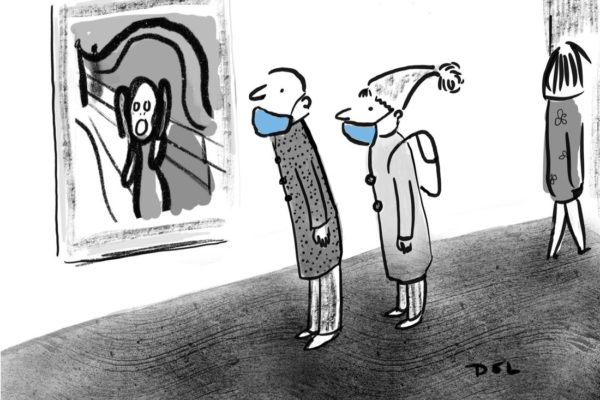Mindfulness and Exposure – The Integration
So we have reviewed some of the similarities and differences between mindfulness and exposure practice. Though they each originate from very different cultural worlds and have different ultimate objectives, it nonetheless appears that there may enough overlap to produce a powerfully integrated fusion to help people work through specific sources of suffering and symptom manifestations. The principal objective of each approach is to point attention to mental material that might ordinarily be disregarded or avoided. The cause of suffering and by extension, many psychiatric symptoms, are produced or maintained by resistance to “inconvenient truths” that a given moment may hold. Therefore, by directing attention into uncomfortable mental experiences, whether through processes of extinction or by “emptying the realms of reactive habit”, one can learn to maintain equanimity in the face of arising material. In so doing, one can come to live a life free of the impediments of control, resistance, and reaction.
I have formulated a technique which I call “Emotional Surfing” that combines elements of both mindfulness and exposure. I have posted descriptions and examples of these procedures elsewhere and so I will not reproduce those here. The reader is referred to the following posts:
https://blackturtlebooks.com/emotional-exposure-exercise/
At some point in the not too distant future, I hope to post videos to demonstrate the utilization of this technique. Each of my books as well, offer a complete rationale, description, examples, and worksheets to help guide one’s practice.
Several things to keep in mind if one chooses to practice this technique:
Lock your attention into any specific feeling, memory, sensation or other difficult emotional material. Pay attention to whatever arises without judgment or resistance.
Label the feelings that arise as specifically as possible.
**It is very important that you do not get stuck into cycles of reactivity. If you are witnessing a memory in which someone inflicted some form of pain upon you, avoid self-statements such as “he (or she) is such an asshole!” Rather the feelings that arise such as “anger”, “helplessness”, “powerlesness” etc. The next step is to focus on those feelings, and whatever images, memories, sensations and thoughts that are produced. Then label the feelings that arise that that produces. And just continue this cycle.
It is a very natural and organic procedure. One does not have to engineer the practice. One typically starts off with whatever thought, feeling, image or memory that is initially present and go from there. Nature will do the rest.
There may be times where the guidance of a skilled clinician is advisable. Some people may have a difficult time separating their inner life from objective reality such as in the case of certain psychotic and personality disorders. Thus they may not be able to view the arising material with openness and may get caught into cycles of reactive emotion. If there is any question, please consult with a professional. For all else, there is no thought, image, memory or sensation that is intrinsically dangerous, though some may certainly be uncomfortable. Whatever is there is a truth that is already there, and thus can be faced. In so doing, we can experience freedom and peace, even in the face of pain.
There is no limit to how this can be applied. It can be applied to any source of worry, fears, loneliness, loss, sadness, craving, attachments, trauma, chronic pain, and so on. It’s just a matter of becoming conscious to all that is. Whatever is can be faced, and therefore one can begin to awaken from the slumber of unconscious reactivity.
Surfs up!! Be warriors!






